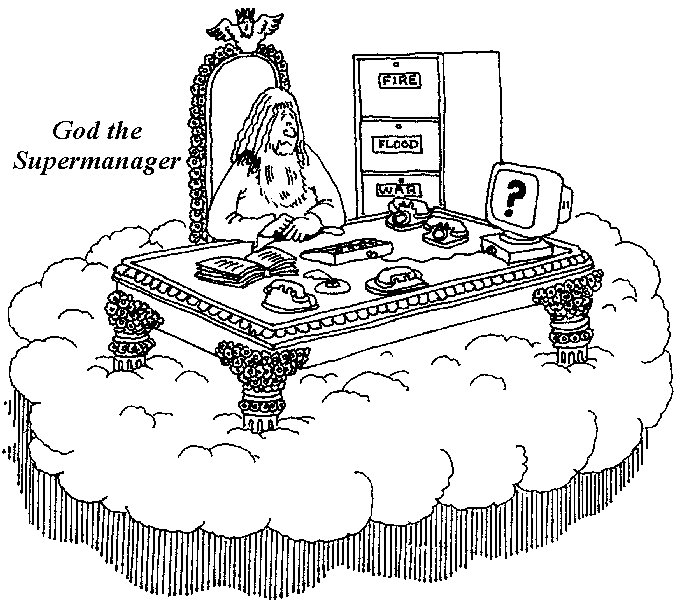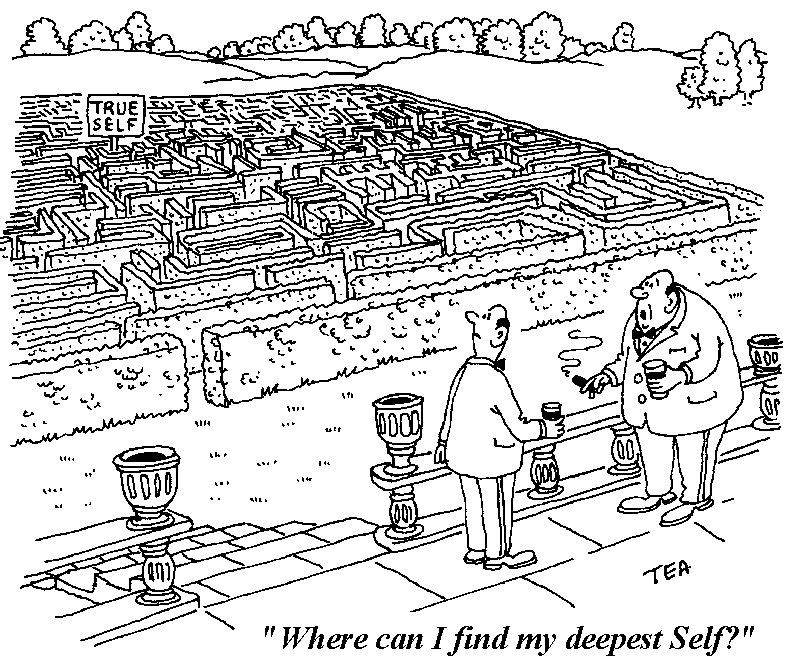Searching God in our modern world
Over my priestly career I have become ever more aware of the absence of God in our modern life. When I was in contact with college students in India in the 1970s I noticed how many of them wrestled with the idea of God. It resulted in my presenting the classical arguments in two publications: a pamphlet for students ‘God or no God?’ (1975) and a book for teachers: ‘Thinking about God’ (also 1975). The book can be downloaded here.
One problem I kept coming across was the so-called doctrine of satisfaction through redemption. It goes back to 11th-century St Anselm. In short it comes to this. Humankind had sinned. God was looking for a way to redeem us from this sin, but his strict sense of justice had to be satisfied first. In other words, God could not simply forgive sins through an act of mercy; satisfaction had to be offered to his justice. God decided to solve the problem by making his own Son assume human nature and die a violent death. Through his bloody sacrifice Christ paid the price on behalf of all. Only then could God forgive sins and receive us back as his children.

Cartoon by Tom Adcock in ‘How to Make Sense of God’
This ‘doctrine’ makes God the Father a tyrant whose blood-thirsty sense of justice had to be satisfied by Jesus shedding his blood for us. Of course, it is a heresy, though some Christians still believe it. Repeatedly I published articles to show that, instead, redemption is an act of pure mercy on God’s behalf and that Jesus accepted his death on a totally voluntary basis. Read ‘Escape from the Cannibal God’ (1984) and ‘The true sacrifice’ (1989).
But the real problems about God lie on a much deeper level.
Our secular selves
Settling back Europe after India it became apparent to me that the anomaly of an ill-fitting ‘God’ was eroding the roots of faith. Research established that for the vast majority of people, God was no longer a central reality around which their life was constructed. People were confused about who or what God is. They questioned God’s credentials. They did not know how to relate to God. They found God awkward, mysterious, even irrelevant; if they thought of God at all. And this incomprehension of ‘God’ was clearly a side-effect of what was called secularization.
I spent time and energy reading the scores of studies that had been done to analyse the causes of secularisation. The increasingly impersonal nature of relationships in modern society corroded belief in a personal God. The disappearance of natural community undermined the traditional systems of meaning. Industrialisation, urbanisation and the rise of science had established new social, economic and personal values. Most of all, people had changed.
In March 1998 I was delegated to take part in a consultation regarding ‘Sects and Fringe Religious Groups in Europe’, convoked by the Council of European Bishops Conferences. I submitted a paper entitled ‘God and our new selves’. In it I pointed out two key background factors that should be kept in mind.
- Moral autonomy is replacing traditional observance. This is helped by better education, a growing awareness of one’s democratic rights, enlightened discussion in the media, a rising living standard. People are more confident to take their own decisions rather than comply with religious prescriptions.
- People are becoming progressively more fulfilment seekers than traditional security seekers. This means being motivated strongly by the needs of self–realisation, belonging and quality of life. It results in a growing resistance to religious creeds or organisations that impose restrictions on one’s views or personal behaviour.

Cartoon by Tom Adcock in ‘How to Make Sense of God’.
At a theological conference in Newman College, Birmingham, in June 2000 I worked out the implications for religion. The German philosopher Friedrich Nietsche proclaimed that we should throw off the shackles of the ‘believer’ and become a Superhuman, that is: a free and autonomous individual, who overcomes the limitations of the past by creating a new world for himself. Nietsche said that in order to become Supermen his contemporaries had to kill ‘God’. Read my paper ‘Christian Autonomy and the Church’.
I decided that it was crucial to attempt giving people convincing reasons not to reject ‘God’ altogether. I bought dozens of atheist books, and even more recent studies on God by theologians. I invited scholars to London for a one-day consultation. I listened, talked, read, thought, agonised and prayed. The outcome was ‘How to Make Sense of God’ (Sheed & Ward 1995). It presents a very personal apologetics: the reasons why someone like myself who passionately holds to the value of science, personal autonomy, human rights and other modern values, holds at the same time that it only makes sense through ‘God’. The book was also part of the video course ‘Journey to the Centre of Love’ which is fully explained here. For illustrations in the book I commissioned the professional cartoonist Tom Adcock to design contemporary cartoons, some of which are displayed throughout this chapter.
‘God’ in our deepest self
My spiritual journey then moved me to explore alternative images of God such as are found in Taoist, Hindu, Sufi and Christian mystics. The traditional image of God is firmly tied to the two-tier world view: above our own, earthly world lies the world of God. God is imagined as enthroned in his palace, high above the blue sky, surrounded by angels and heavenly beings who form his court. God is the architect who designed and created the earthly world. As its immediate ruler, he frequently leaves his mark on our earthly world by revealing messages and by dispensing grace or punishment. Both the Hebrew Scriptures and the New Testament use this imagery. It is still the language handled in worship. God is addressed as the Almighty Father, Creator of heaven and earth, whom we beg to cast his eyes on us, his earthly children. God is thought to protect us from evil and shower us with blessings. He cares for us from his exalted position above.

Cartoon by Tom Adcock in ‘How to Make Sense of God’.
Now the use of such language is quite legitimate as long as we remember that it only expresses an image of God, not the actual reality. But until the beginning of this century most believers took the two-tier world and its presiding God literally, as if they expressed factual entities. The super world of heaven was assumed to be a real place outside and above earthly space. God was accepted to be a real supernatural Person, like us except that he was infinitely greater than us in every respect. But the image was the by-product of the philosophy and empire building of the ancient Middle East. It cannot be reconciled with our present knowledge of the universe and our grasp of social power. The image does no longer fit. And if it is taken as an accurate description of God as many people still do, it sticks in the brain and the heart as a lump of contradiction. It is concepts like this that are largely responsible for our generation’s reluctance to accept God.
On the other hand, the fact that the supernatural, interventionist God is dead in our technological age, does not mean there is no God at all. Evolution explains relationships within the universe, not the universe itself. Why this universe, this set of laws, this arrangement of matter and energy? Why anything at all? Since every phenomenon needs an explanation outside itself, the physical universe understood as all physical existence, needs an explanation that is not physical, a reality we call ‘God’. But to reach out to ‘God’ we need another approach.
Instead of regarding ‘God’ as just an outside legislator, we can find ‘God’ as the source of our own moral responsibility, as the power that validates our freedom and autonomy, as the force in us that makes us an individual and that drives us to fulfil our obligations. Following the lead of the process theologians and the evolutionary theology of Karl Rahner, we can see revelation itself and incarnation as eruptions of divine awareness and the divine presence “from the Beyond within”, rather than as external intrusions into our world. It led me to write ‘God Within Us’ (London 1988) which can be downloaded here. See also the methods developed by Ruysbroeck – ‘Ruysbroeck and the God Within’ and by Al-Ghazali – ‘God and yourself’.

Cartoon by Tom Adcock in ‘How to Make Sense of God’.
The image of God as the “Beyond Within”, for that matter, is not unbiblical. “A person’s spirit is the lamp of God searching his deepest self” (Proverbs 20,27). Paul says: “The Spirit reaches the depths of everything, even the depths of God. After all, the depths of a person can only be known by his/her own spirit, not by any other person. In the same way the depths of God can only be known by the Spirit of God” (1 Corinthians 2,11). But the most telling argument is Jesus himself who is, after all, the image of God. He called himself `the Son of Man’, the Aramaic equivalent for “the ordinary human being”. In Jesus who could say: “Who sees me, sees the Father” (John 14,9), God showed himself to us from within a human psyche and from within the human race.
New images for ‘God’
Reflecting again on my own search, I see a gradual, but irreversible shift in my perception of God and in the images that speak to me of God. I am convinced that I have not lost in any way the essence of my Christian faith in God or of my being held by God in Christ. But many of my concepts have changed and are changing, my focus is being adjusted, priorities are moving, new images support my vision, I have reformulated my reasons for believing what I do. It seems to me that without this `loosening of old constructs’, my faith might well not have survived.
Priests and ministers keep using the old terminology as if there is no question of a cultural mismatch. We fail to present God in ways that speak to the imagination of the scientifically-minded and freedom-conscious people of our time.
People of our time find it more difficult to find God because they still look for God in traditional niches – from which God has disappeared. Gone has the supernatural interventionist God who rules the world day by day from a throne high up in heaven. Gone is the lawgiver God who imposes arbitrary do’s and dont’s to test our obedience. Gone is the God of the Psalms whom we can rouse from his slumber to come to our aid. But that does not mean that the reality of God is no longer there.
God does not change, we do. God’s reality remains the same, but the way God figures in our world view needs to be adjusted. We will have to use concepts and images of God which make sense to us in our time. This is not an attempt to please contemporary seekers at the expense of truth. It is rather a re-assessment of the way we understand and express the truth.
I have reflected on this in a number of my articles. In a piece for the London Times I tried to express the ‘divine dimension’ in terms that might also be meaningful to secular contemporaries. Read ‘Learning to live with life after death’ (1991). A few years later, again for the Times of London, I tried to show that the dimension of ‘God’ can somehow be touched in our absolute need of friendship, relationship, intimacy: ‘Seeking “black holes” of intimacy’ (1997).

Cartoon by Tom Adcock in ‘How to Make Sense of God’.
I also reported on my amazing encounter with the Chinese Fang family in Taiwan (1994). Although disclaiming any interest in organised religion, their utter commitment to values honesty, justice and love revealed that the ‘God dimension’ was very much alive in them. Read ‘God in ordinary’ (1994).
In later years I built a special website to deal with the absence and reality of ‘God’ – www.mysteryandbeyond.org. On the opening pages I spell out a possible approach to discovering the ‘Beyond within’.
THE STORY OF MY LIFE
- » FOREWORD
- » Part One. LEARNING TO SURVIVE
- » origins
- » into gaping jaws
- » from the pincers of death
- » my father
- » my mother
- » my rules for survival
- » Part Two. SUBMIT TO CLERICAL DOGMA — OR THINK FOR MYSELF?
- » seeking love
- » learning to think
- » what kind of priest?
- » training for battle
- » clash of minds
- » lessons on the way to India
- » Part Three (1). INDIA - building 'church'
- » St John's Seminary Hyderabad
- » Andhra Pradesh
- » Jyotirmai – spreading light
- » Indian Liturgy
- » Sisters' Formation in Jeevan Jyothi
- » Helping the poor
- » Part Three (2). INDIA – creating media
- » Amruthavani
- » Background to the Gospels
- » Storytelling
- » Bible translation
- » Film on Christ: Karunamayudu
- » The illustrated life of Christ
- » Part Three (3). INDIA - redeeming 'body'
- » spotting the octopus
- » the challenge
- » screwed up sex guru
- » finding God in a partner?
- » my code for sex and love
- » Part Four. MILL HILL SOCIETY
- » My job at Mill Hill
- » The future of missionary societies
- » Recruitment and Formation
- » Returned Missionaries
- » Brothers and Associates
- » Part Five. HOUSETOP LONDON
- » Planning my work
- » Teaching teaching
- » Pakistan
- » Biblical Spirituality
- » Searching God in our modern world
- » ARK2 Christian Television
- » Part Five (2) New Religious Movements
- » Sects & Cults
- » Wisdom from the East?
- » Masters of Deception
- » Part Five (3). VIDEO COURSES
- » Faith formation through video
- » Our Spirituality Courses
- » Walking on Water
- » My Galilee My People
- » Together in My Name
- » I Have No Favourites
- » How to Make Sense of God
- » Part Six (1). RESIGNATION
- » Publicity
- » Preamble
- » Reaction in India
- » Mill Hill responses
- » The Vatican
- » Part 6 (2). JACKIE
- » childhood
- » youth and studies
- » finding God
- » Mission in India
- » Housetop apostolate
- » poetry
- » our marriage
